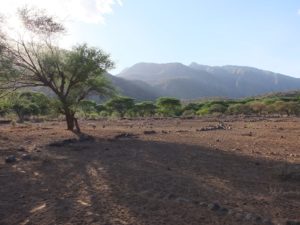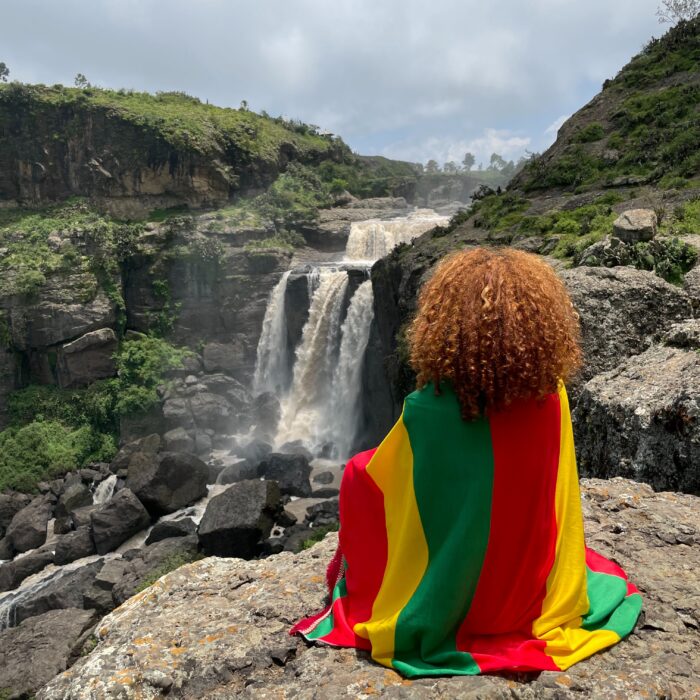You have no items in your cart. Want to get some nice things?
Go shopping On my first day of work at Engaruka, my phone’s weather app has told me that it will be 40°C by 9 am. I can now confirm this in person. Although I apply sun screen frequently and gratuitously, it melts off as quickly as I can slap it on. It is too hot to move quickly. To swat away the flies sitting lazily on my face would involve a gesture too rapid to comprehend in this weather. On the other hand, the flies themselves do not seem like they’d be willing to summon the energy to move if I were to make such an attempt.
On my first day of work at Engaruka, my phone’s weather app has told me that it will be 40°C by 9 am. I can now confirm this in person. Although I apply sun screen frequently and gratuitously, it melts off as quickly as I can slap it on. It is too hot to move quickly. To swat away the flies sitting lazily on my face would involve a gesture too rapid to comprehend in this weather. On the other hand, the flies themselves do not seem like they’d be willing to summon the energy to move if I were to make such an attempt.
Instead, however, I turn back to the trench. On the other side, a small, silent group of Maasai boys is staring questioningly at me. For a moment I stare back at them, defiant to their scrutiny, hoping maybe they will break first. When they do not, I jump back down into the sandy hole and continue to brush off the section for a photograph. The team I am working with are trying to determine the sequence of events in the population decline of this settlement, which was abandoned by the mid-18th century. If we can decide this, then the Engaruka mystery becomes a little more accessible.
‘Maybe they didn’t like the taste of melting sunscreen in their mouths’ I speculate to myself. I am here to excavate on the site for the next two weeks as part of a team investigating the prehistory of agriculture in East Africa, and already the heat and the dust is ruining my enthusiasm. Although once one of the largest population centres in inland eastern Africa, today Engaruka overlooks a dusty, remote arm of the Rift Valley of north-western Tanzania that receives less than 400mm of precipitation a year.
Rarely do tourists make it out to Engaruka. If they do come by this way, they come to shoot or ogle game in one of the several adjacent national parks and reserves. Although the site sits right on the edge of the much more popular and touristic Serengeti National Park and Ngorongoro Conservation Area, it is many times more difficult to reach by public transport. The journey from Nairobi the previous day had taken me ten hours and three changes of vehicle, the last hour and half of which I spent clinging to the back of a motorbike taxi on a dirt track, promising God that if he let me live, I would go to church every Sunday and even occasionally on Christmas.
The story of the site, as told by the archaeology, is vague. Sometime in the 15th century, locals began experimenting with the small-scale cultivation of indigenous African crops such as millet and sorghum. Over the next three centuries, however, their success in these small-scale endeavours led to a vast expansion in the farming system and a significant increase in population. A huge amount of labour was invested over this time in building furrows to canalize the Engaruka River and redistribute water to the fields, which sprawled at the foot of the Rift escarpment. Large terraces were constructed, repaired, and reconstructed, and today have achieved a cumulative height of over 3 meters in places. On the slopes overlooking these fields, a large town grew to incorporate a burgeoning population, which at its height may have included over 8000 men, women, and children.
Despite its remote location, Engaruka is one of the most important archaeological sites in sub-Saharan Africa. Part of the reason behind the site’s inaccessibility has to do with the images promoted by the international travel industry and the Tanzanian government alike. For all its ‘natural’ beauty, the rich human history of East Africa is often overlooked. Under the pressures of an international conservationism movement, and in an effort to attract international funding and draw in tourists, this area of the world has been indelibly branded as a ‘natural’, ‘pristine’ wilderness, free of human interference. The creation of numerous national parks and game areas, such as the Serengeti National Park (established in 1952) and Ngorongoro Conservation Area (established 1979), reinforced these notions. Inscribed as a UNESCO World Heritage site in 1981, the Serengeti was said to harbour “the largest remaining unaltered animal migration in the world”. The Serengeti, it would appear, is a triumph of conservationism in a world where, due to the destructive nature of human action, ‘natural’ beauty is at a premium.
But here’s the thing: much of what is considered ‘natural’ about the Serengeti is not at all. These plains are not the unspoiled wilderness envisioned by conservationists and travel brochures, but a landscape shaped by continual human interaction with the environment for thousands of years.
One of the explicit aims in the creation of a national park that humans should not be allowed to disturb the animals’ migration, and indeed should not be allowed into the park at all unless explicitly given permission by the park authorities. Protection of wildlife meant the unequivocal eradication of any human presence. Consider the rich grasslands for which the Serengeti is so famous. Every year in December, some 1.3 millions wildebeest, zebras, and gazelle descend from the forested hills of the western Serengeti onto the plains to graze on these grasses. Until the creation of the park in 1952, however, these grasses were kept productive through frequent controlled bush firings by local groups. This included not just the Maasai, who are the only locals still allowed to move relatively freely in the park, but numerous other groups that practiced a mix of agriculture and pastoralism in the area prior to its shutting-off. The ecosystem thrived off such firings, which renewed the soil and provided a fertile layer of ash for regrowth. The sparsely-vegetated plains look the way they do today because of this practice, which has been occurring for thousands of years.
The archaeological traces left by such groups are subtle, but pervasive. Engaruka is by far the most visible of the remains, yet it is so unknown and remote as to be easily overlooked. Throughout the Serengeti, however, there are clues to its rich human history. The plains are tattooed with the soil silhouettes of hundreds of abandoned settlement sites testifying to a complex history of periodic human migrations, including those of pastoralists, agriculturalists, and hunter-gatherers. In the Ikorongo Game Reserve of the western Serengeti, you might see the remains of the massive stone walls built by the Ikoma in the 19th-century to protect them from fearsome Maasai raids, but which did nothing to deter park authorities from partially deconstructing them for use in other building projects. Head a little further south and east into Ngorongoro and you may spot numerous stone cairns containing human burials dating from the later Stone Age. And as you exit Ngorongoro and the Rift escarpment drops away beneath you, take the road north from Mto wa Mbu and visit the Engaruka ruins, and you may begin to understand that this is not a land untouched by humans.
It is my last day at Engaruka, having been digging here for two weeks in the merciless heat and dust. The group of boys who came to watch me dig on the first day still sit on the edge of my trench, staring no less intently. They seem entranced by my slow shifting of dirt from one location to another, and then back again. Eventually, I think, their families will move on to another location in the valley in search of fertile grazing for their animals. They will probably leave behind little except a few buildings which will eventually crumble. In a few decades, there will just be a few more silhouetted post-holes in the earth, to join the hundreds of others across this landscape that are reminiscent of the mobile livelihood of the locals. A human migration: slow, but no less great, than the Great Migration for which the Serengeti is better known.
For the Serengeti and the numerous national parks and game reserves that carve it up, it is a case of not being able to see the savanna for the acacia trees. The entire landscape is an artifact that continues to develop through the actions of conservationists and tourists alike, yet it is exactly those groups who insist that it must be kept ‘pristine’. By branding the entire landscape as forever natural and unchanging, we are recreating it in the conservationist ideal. What we are actually conserving, however, is a mere figment of modern imagination.
About Alexander Walmsley
Postgraduate student at University of Geneva, Switzerland. Anthropology, Heritage, Environment.



